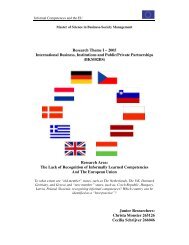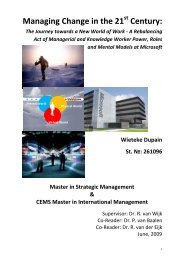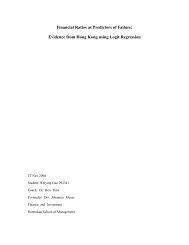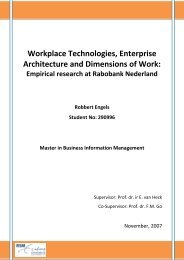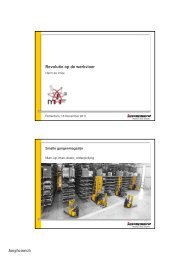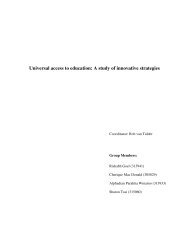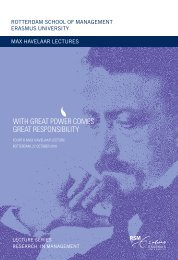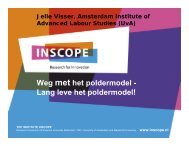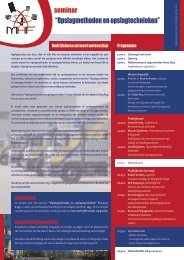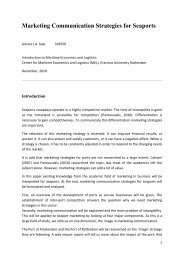here - ERIM - Erasmus Universiteit Rotterdam
here - ERIM - Erasmus Universiteit Rotterdam
here - ERIM - Erasmus Universiteit Rotterdam
You also want an ePaper? Increase the reach of your titles
YUMPU automatically turns print PDFs into web optimized ePapers that Google loves.
A validation Study of House of Quality key performance indicators<br />
Table 1 - Virtual Community benefits for consumers and producers (De Valck, 2005)<br />
The main benefit for consumers will be the extent of information that can be found by interacting in<br />
virtual communities. Knowledge and experiences related to products, services, brands, producers<br />
and retailers are shared between community members. The information gat<strong>here</strong>d within the<br />
community can result in improved consumers decision-making and product usage.<br />
Besides gathering knowledge and experiences of other users, virtual communities can be used for<br />
interaction between consumers and producers. Interaction with consumers will provide companies<br />
more information about consumer needs, attitudes, behaviour and norms and values (De Valck,<br />
2005). Interactions with companies offer consumers the opportunity to give their opinions about<br />
existing products and services. Companies can anticipate on this feedback and use it in further<br />
development processes. By interaction between companies and customers a relationship can be<br />
established which can result in loyalty and mutual understanding.<br />
When communities are integrated into the development process of new products, this is called<br />
collaborative product development (Go, 2007) or community based innovation (Fuller, 2004). Due to<br />
their high product interests and knowledge, members of communities of consumption can be a<br />
suitable source for virtual participation in new product development processes (Kozinets, 1999).<br />
Members of virtual communities can act as co-creators, testers and buyers by their contribution in<br />
the development process (Fuller, 2004) and t<strong>here</strong>fore co-create value in a dynamic way (Prahalad<br />
and Ramaswamy, 2004).<br />
32




